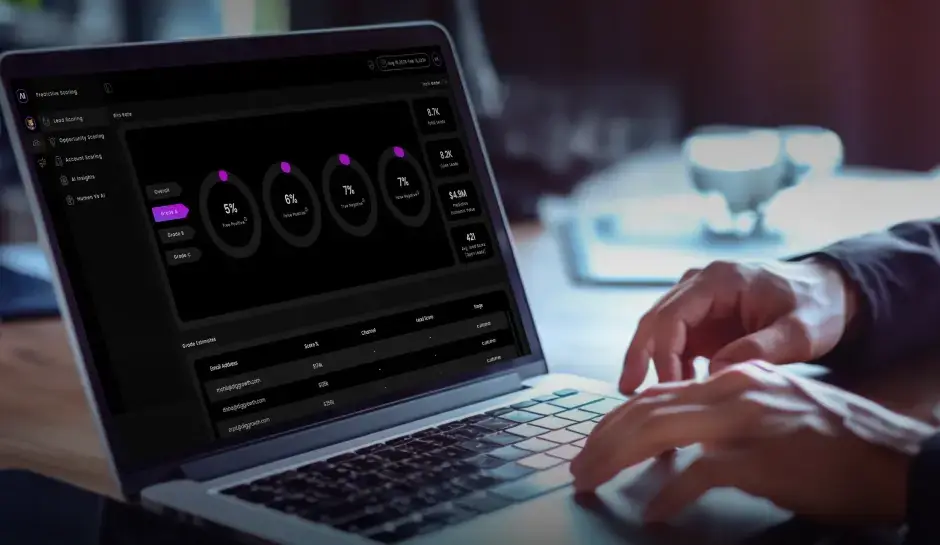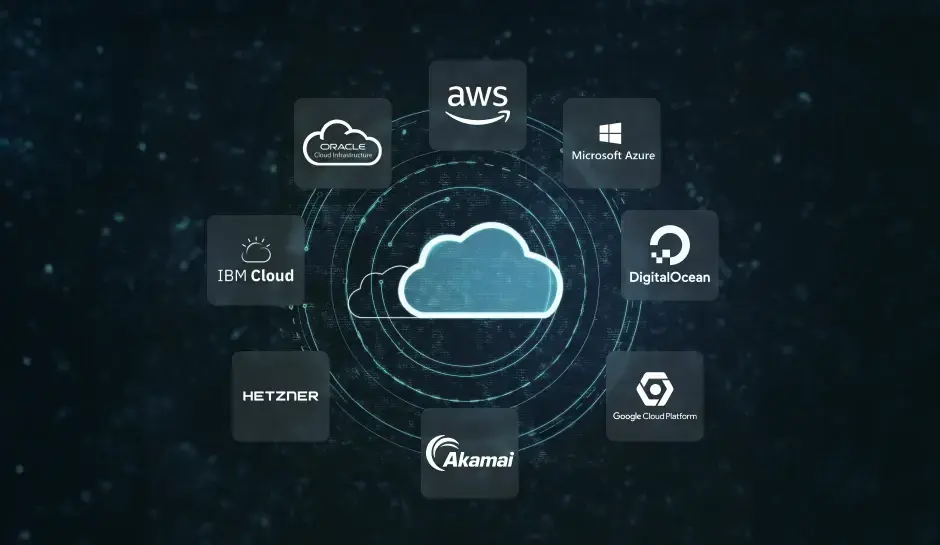
The Essential Guide to Data Governance Metrics: What to Track and Why
Data governance metrics are tools that show how well your program is doing. They give you clear insights into what's working and what needs improvement. With so many metrics to choose from, it can feel overwhelming. This blog will help you understand and use data governance metrics effectively.
Today, organizations are drowning in much data and need the right wisdom. That’s where data governance comes in. Think of it like a map for your journey—it helps you manage, secure, and use your data effectively.
Why should you measure? Here are some reasons:
Showing the Value: To prove that your data governance program is worth it, you must show its impact on your organization’s success. For example, if you can show that errors in your data have gone down by 20% since you started using data governance measures, it proves that your program is working.
Similarly, if you can show that your company’s revenue from data-driven decisions has gone up by 15%, it shows how valuable data governance is. These numbers impress people and justify the investment in data governance.
- Getting Support:
- Improving Performance:
- Holding People Accountable:
Getting support from top-level decision-makers can only be easy with proof that your data governance efforts are paying off. Metrics help here by showing the positive impact of data governance.
When decision-makers see their choices make a difference, they will more likely support your efforts. Tracking progress over time ensures that executives stay interested and committed to your data governance program.
Data governance is an ongoing process, and you must keep improving to keep up with changes. Metrics help by showing you where you need to make changes.
For example, if user adoption of a new data access policy isn’t increasing as expected, it tells you that something needs to change. Metrics help you find and fix problems so your data governance stays effective and meets your business needs.
Everyone must contribute to a successful data governance program. Clear metrics help assign responsibility to individuals or teams. When people know they’re responsible for specific data tasks, they’re more likely to take them seriously.
Metrics also help track progress, so it’s clear when goals are met or changes are needed. This accountability creates a culture where everyone values data quality and works to maintain it.
The Essential Data Governance Metrics: What to Track and Why
To grasp the essence of data governance metrics, delving into their core components is crucial. These components include:
- Key Performance Indicators (KPIs):
- Compliance Metrics:
- Data Quality Metrics:
KPIs are metrics used to evaluate the performance of data governance initiatives. They provide measurable indicators of success and help gauge progress toward specific goals.
Compliance metrics assess the extent to which an organization adheres to regulatory requirements, industry standards, and internal policies related to data governance. These metrics ensure that data management practices align with legal and ethical obligations.
Data quality metrics focus on assessing the accuracy, completeness, consistency, and reliability of data. They help organizations maintain high data quality standards for making informed business decisions and ensuring operational efficiency.
Establishing Key Performance Indicators (KPIs)
When establishing key performance indicators (KPIs) for data governance, it’s essential to align them with the overarching goals of the organization. This ensures that data governance efforts directly contribute to the organization’s strategic objectives.
Tracking Data Accuracy
One crucial aspect of KPIs in data governance is tracking data accuracy. This involves measuring the extent to which the data within an organization’s systems and databases is correct and reliable. Accurate data is essential for making informed decisions and driving business success.
Monitoring Data Accessibility
Another important KPI is monitoring data accessibility. This involves assessing the ease with which authorized users can access the data they need for their roles and responsibilities. Ensuring data accessibility promotes collaboration, efficiency, and innovation within the organization.
Assessing Data Completeness
Lastly, assessing data completeness is a vital KPI in data governance. This entails evaluating whether all necessary data fields and elements are present and populated within the organization’s datasets. Complete data ensures that analyses and insights derived from the data are comprehensive and reliable, enabling informed decision-making.
Ensuring Compliance Metrics Adherence
Regulatory compliance metrics focus on ensuring that an organization meets the legal requirements and standards set forth by regulatory bodies. These metrics help organizations avoid legal risks and penalties by ensuring adherence to relevant laws and regulations governing data management practices.
Privacy Compliance Metrics
Privacy compliance metrics specifically address protecting sensitive and personal information collected and stored by an organization. These metrics evaluate the organization’s compliance with privacy laws and regulations, such as GDPR (General Data Protection Regulation) and CCPA (California Consumer Privacy Act), to safeguard individuals’ privacy rights.
Security Compliance Metrics
Security compliance metrics assess the effectiveness of an organization’s security measures in safeguarding its data assets against unauthorized access, breaches, and cyber threats. These metrics measure compliance with security standards and protocols to ensure data confidentiality, integrity, and availability.
Legal Compliance Metrics
Legal compliance metrics ensure that an organization’s data management practices align with relevant legal requirements beyond privacy and security regulations. These metrics encompass adherence to contractual obligations, industry-specific regulations, and other legal mandates to mitigate legal risks and liabilities.
Enhancing Data Quality Metrics
Precision and accuracy are fundamental aspects of data quality metrics. Precision refers to the level of detail and specificity present in the data, ensuring that it is finely tuned to the intended purpose. Accuracy pertains to the correctness and reliability of the data, ensuring that it reflects the true values or conditions it represents.
Consistency and Completeness
Consistency and completeness are critical factors in assessing data quality. Consistency ensures uniformity and coherence across different datasets, eliminating discrepancies and contradictions. Completeness evaluates whether all necessary data elements are present and populated within the datasets, ensuring no vital information is missing.
Timeliness and Validity
Timeliness and validity are key dimensions of data quality metrics that focus on the relevance and currency of the data. Timeliness measures how up-to-date the data is, ensuring it reflects the most recent information. Validity, on the other hand, assesses the accuracy and relevance of the data about the intended purpose, ensuring that it remains valid and applicable for decision-making and analysis.
Accessibility and Relevance
Accessibility and relevance are essential considerations in evaluating data quality. Accessibility measures the ease users can access and retrieve the data they need for their tasks and responsibilities. Relevance assesses the alignment of the data with the organization’s objectives and requirements, ensuring that it provides valuable insights and supports informed decision-making.
Leveraging Advanced Analytics for Governance
Predictive analytics uses historical data, statistical algorithms, and machine learning techniques to forecast future events or outcomes. In the governance context, predictive analytics is utilized for risk management, enabling organizations to identify and mitigate potential risks before they materialize.
Predictive analytics analyzes data patterns and trends to help organizations anticipate and proactively address emerging risks, enhancing decision-making and strategic planning.
Prescriptive Analytics for Decision Making
Prescriptive analytics goes beyond predicting future outcomes by recommending actions to achieve desired objectives or outcomes. In governance, prescriptive analytics aids decision-making processes by providing actionable insights and recommendations based on data analysis.
By considering various constraints, preferences, and objectives, prescriptive analytics enables organizations to make informed decisions that maximize desired outcomes while minimizing risks and uncertainties.
Diagnostic Analytics for Root Cause Analysis
Diagnostic analytics involves analyzing historical data to understand the underlying causes of past events or outcomes. In governance, diagnostic analytics is used for root cause analysis, helping organizations identify the factors contributing to specific issues or challenges.
By examining historical data and identifying patterns or anomalies, diagnostic analytics facilitates the identification of root causes, enabling organizations to address underlying issues and prevent recurrence.
Descriptive Analytics for Performance Evaluation
Descriptive analytics summarizes and interprets historical data to provide insights into past events or trends. In governance, descriptive analytics is employed for performance evaluation, enabling organizations to assess the effectiveness of their governance practices and initiatives.
By analyzing key performance indicators (KPIs) and other relevant metrics, descriptive analytics helps organizations understand past performance, identify areas of improvement, and make data-driven decisions to enhance governance effectiveness.
Integrating Automation for Efficiency
Automated data profiling involves using software tools and algorithms to analyze and summarize the characteristics of data stored in databases or systems automatically. This process helps organizations gain insights into their data’s structure, quality, and content without manual intervention. Organizations can efficiently identify data anomalies, inconsistencies, and patterns by automating data profiling, enabling them to make informed decisions and improve data quality.
Automated Data Cleansing
Automated data cleansing means detecting and correcting data sets’ errors, inconsistencies, and redundancies. Organizations can streamline the data cleansing process by leveraging software tools and algorithms, ensuring that data remains accurate, reliable, and consistent.
Automated data cleansing helps improve data quality, reduce manual effort, and enhance the effectiveness of data-driven decision-making processes.
Automated Data Monitoring
Automated data monitoring involves using software tools and systems to continuously monitor data sources, processes, and real-time transactions. This proactive approach enables organizations to promptly detect and respond to data issues, anomalies, or security breaches. By automating data monitoring, organizations can mitigate risks, ensure data integrity, and more effectively maintain compliance with regulatory requirements.
Automated Data Classification
Automated data classification refers to automatically categorizing and tagging data based on predefined criteria, such as sensitivity, content, or usage. Organizations can classify data accurately and efficiently by leveraging machine learning algorithms and pattern recognition techniques, facilitating data governance, security, and compliance efforts.
Automated data classification helps organizations identify and protect sensitive data, streamline data management processes, and improve overall data governance effectiveness.
Addressing Data Governance Challenges
One of the significant challenges in implementing data governance is overcoming resistance to change. This involves addressing reluctance or opposition from individuals or groups within the organization who may resist adopting new processes, tools, or policies related to data governance.
Overcoming resistance to change requires effective communication, stakeholder engagement, and leadership support to emphasize the benefits and importance of data governance initiatives.
Managing Cultural Shifts
Managing cultural shifts entails navigating changes in organizational culture and mindset to embrace data governance principles and practices fully. This involves fostering a data-driven culture where data is valued, trusted, and integrated into decision-making processes across all levels of the organization.
Managing cultural shifts requires leadership commitment, employee education, ongoing data governance values, and behavior reinforcement.
Navigating Technological Hurdles
Navigating technological hurdles involves addressing challenges related to the technology infrastructure, tools, and systems required to support data governance initiatives. This includes overcoming the limitations of legacy systems, integrating disparate data sources, ensuring data security, and effectively implementing data governance solutions.
Navigating technological hurdles requires collaboration between IT and business stakeholders, strategic planning, and investment in technology capabilities and resources.
Ensuring Stakeholder Buy-In
Ensuring stakeholder buy-in is crucial for the success of data governance initiatives. This involves gaining support and commitment from key organizational stakeholders, including executives, managers, data owners, and end-users.
Stakeholder buy-in can be achieved through effective communication, demonstrating the value and benefits of data governance, addressing concerns and feedback, and involving stakeholders in decision-making. By ensuring stakeholder buy-in and driving sustainable success, organizations can foster ownership, accountability, and engagement in data governance efforts.
Data Governance Best Practices
One of the foundational steps in implementing data governance is establishing clear policies and procedures. This involves defining guidelines, rules, and standards for data management, usage, and security within the organization.
Clear policies and procedures provide a framework for consistent and compliant data practices, reducing ambiguity and minimizing data misuse or mishandling risks.
Instituting Cross-Functional Collaboration
Effective data governance requires collaboration across different departments and functions within the organization. Instituting cross-functional collaboration involves breaking down silos and fostering cooperation between IT, business units, compliance, legal, and other relevant stakeholders.
By promoting collaboration, organizations can ensure the alignment of data governance efforts with business objectives, enhance communication and coordination, and leverage diverse perspectives and expertise to drive data-driven decision-making.
Fostering Data Literacy
Data literacy is essential for empowering employees to understand, analyze, and interpret data effectively. Fostering data literacy involves providing training, resources, and support to enhance employees’ knowledge and skills related to data concepts, tools, and techniques.
Organizations can empower employees to make informed decisions, drive innovation, and contribute to data-driven initiatives by fostering data literacy.
Regular Training and Education Initiatives
Continuous learning and education are critical for maintaining and enhancing data governance capabilities within the organization. Regular training and education initiatives provide employees with ongoing opportunities to expand their knowledge, stay updated on emerging trends and technologies, and deepen their understanding of data governance principles and practices.
By investing in training and education, organizations can build a learning, adaptability, and continuous improvement culture, ensuring that data governance remains effective and relevant in an evolving landscape.
Final Thoughts
Mastering the art of data governance metrics is pivotal for organizations striving to harness the full potential of their data assets. By aligning metrics with strategic objectives, leveraging advanced analytics, and embracing automation, organizations can confidently navigate the complexities of data governance.
Elevate Your Organization’s Data Strategy Today Talk to Us!
Unlock the Power of Your Data with Comprehensive Governance Metrics! Measure, Manage, and Maximize Data Quality, Compliance, and Security. Just write to us at info@diggrowth.com and we’ll get back to you.
Ready to get started?
Increase your marketing ROI by 30% with custom dashboards & reports that present a clear picture of marketing effectiveness
Start Free Trial
Experience Premium Marketing Analytics At Budget-Friendly Pricing.

Learn how you can accurately measure return on marketing investment.
Additional Resources
The Future of Marketing: How Predictive Lead and Account Scoring is Changing the Game
Can we, in this incredible marketing landscape driven...
Read full post postCloud Wars: A Comparative Analysis of Leading Cloud Vendors
How many companies are using cloud computing? Around...
Read full post postContent Marketing Attribution: Tracking Content Impact Across the Customer Journey
So, you've poured your heart into crafting the...
Read full post postFAQ's
In governance, a Key Performance Indicator (KPI) is a measurable value that demonstrates how effectively an organization is achieving its key objectives and goals. Specifically in data governance, KPIs are used to assess the performance and effectiveness of data governance initiatives, providing insights into areas such as data quality, compliance, security, and overall data management.
Evaluating data governance involves assessing various aspects of the data management process to ensure that it aligns with organizational goals and requirements. This can be done through a combination of qualitative and quantitative methods, including:
The three pillars of data governance are typically: People: This pillar focuses on establishing clear roles, responsibilities, and accountability for data management within an organization. It involves defining data stewardship roles, establishing governance committees, and fostering a data-centric culture. Processes: This pillar involves developing and implementing formalized processes and procedures for managing data throughout its lifecycle. It includes activities such as data classification, metadata management, data quality management, data access controls, and data lifecycle management. Technology: This pillar encompasses the tools, technologies, and infrastructure needed to support data governance initiatives. This may include data governance software, data cataloging tools, master data management systems, data quality tools, and security solutions.
 Rahul Saini
Rahul Saini  Sameer Pawar
Sameer Pawar 

